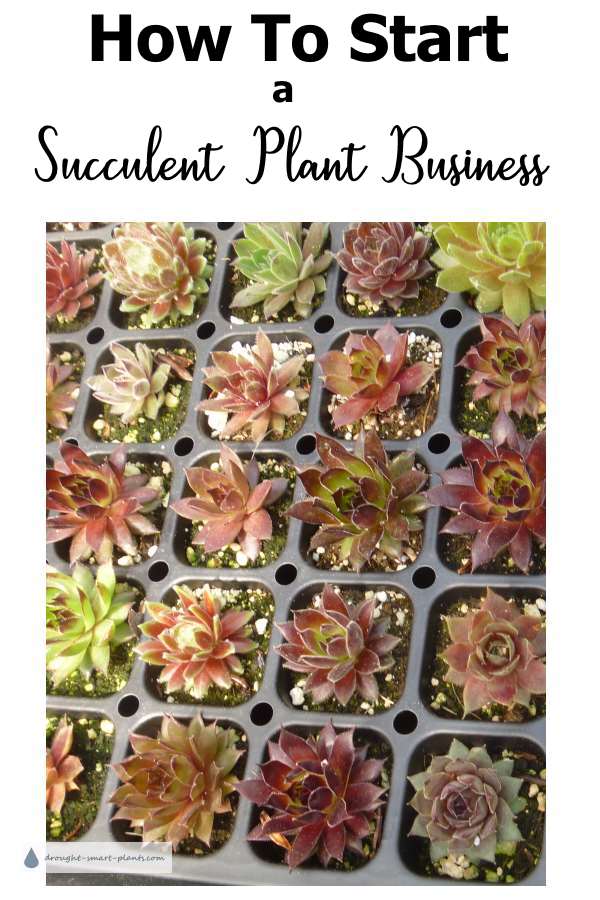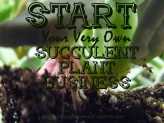Step-by-Step Instructions
Or, how I did it. Mostly by accident.

When I first started selling my hardy succulents (because that was the only things I could keep alive in my climate) I thought I was going to produce Sedum plugs for people wanting to put in a green roof.
And I did, up until the summer when someone wanted to purchase thousands of Sedum cuttings so they could plant them on the roof themselves.
Over the course of several months, I cut and packaged many thousands of healthy and potentially viable cuttings for the green roof that the customer had installed. I have no idea how this worked out as they quickly got divorced and I never heard any more about it.
Could the stress of putting plants on the roof have triggered a break up?
Steps for Starting a Succulent Plant Microbusiness;
- First, choose a niche. And stay open to revision if you get feedback from customers or friends.
- Put together a few prototypes as proof to you and to others that this will be super fantastic.
- Market the prototypes by posting on social media and asking for feedback, comments or criticism.
- Tweak the product.
- Revisit step three.
- Go into production, again, staying open to tweaking your niche, methods and techniques.
The same year, I got several requests in quick succession from brides looking to purchase many little succulents.
I knew they probably wanted tender ones, but what I had was many Sempervivum, which so appealed to me with their varied colors and shapes. So I made this suggestion, which they jumped on, glad to get this checked off their list.
The nice thing about wedding favors is that you have a deadline, and it’s usually a long way off.
I decided to use the many 72 cell plug trays that I had bought for the Sedum plugs, and see how it worked for Sempervivum.
Over the next few years of producing plugs of Sempervivum I found a few of them that liked to have large families of chicks, all a uniform size.
I planted these mother hens in my rock walls, where I could keep an eye on them, and every few days in the late summer, I could harvest them.
They became my stock plants.
After harvesting them, I put the chicks on the top of the soil in the plug trays, let them root in the greenhouse or in beds out in the nursery, then left them to get established.
They would mature over the winter. The only thing I would do is put wire fencing over top of them to protect them from rabbits.
In April, which is when wedding season gets under way, I would bring trays back into the greenhouse to get a head start on the season.
By the time it was getting close to shipping time, about two to three weeks ahead of the big day, they had a chance to dry off in preparation.
Drying them is a big part of making a successful shipment; they don’t get stretched in the darkness of the box, and they don’t rot. Then it’s up to the bride and her band of merry bridesmaids to get them watered, put each one into a pretty container, and have them ready to give to their guests.
A Bit About Pricing
Don’t undercut yourself. This is (again) market research. Find out what other people are charging, and price your product accordingly.
I discovered that multiples of 72 (a full tray) or 36 (half a tray) worked well, because often guests at a wedding are in the hundreds. This gives the bride a few extra plants to tuck into table flowers or centerpieces if there are too many.
I settled on this because I figured out a way to package them to ship by cutting the trays in half (with scissors, as they’re just made of thin plastic).
They fit perfectly (protected with heavy newspaper) into a liquor store box. Use what works, don’t spend your profit on special single use boxes for shipping!
The two things that really stand out to me now, looking back, is how important it is to do market research – does anyone actually want to buy what you’re offering? and also the importance of staying nimble and open to market pivots.
If I hadn’t listened when the first brides approached me, I would have missed out on an incredibly fun (and lucrative) little sideline which evolved into so much more.
For instance, if you decide (after doing your market research, of course) that you want to produce lovely succulent wreaths to sell, but you keep getting comments and remarks about the price being too high, why not offer a seminar or workshop where people can make their own?
You purchase the supplies wholesale, which you’re doing already to produce your own wreaths.
Mark them up a tiny amount for your students, they supply their own succulent cuttings or purchase them from you, and you all have a wonderful time creating something beautiful to take home.
And, the goodwill you get is the gift that keeps on giving. This could potentially pivot your business in a really different direction that gives you so much joy and satisfaction.
Make sure you find a journalist to attend and write it up for the local paper too!
Alternately, or in addition, hire someone to video tape the session, to use as fodder for blog posts, on social media, or as promotional footage for further workshops – you may be onto something!
After three years of providing wedding favors to brides, the mainstay of the business, I decided to pass it along to someone else and sold it to someone who was already doing something similar.
The equity I had built up stood me in good stead, and I made some money with the sale. I refer to this as my legacy – either I sell it on to someone else, or my heirs have to do it.











